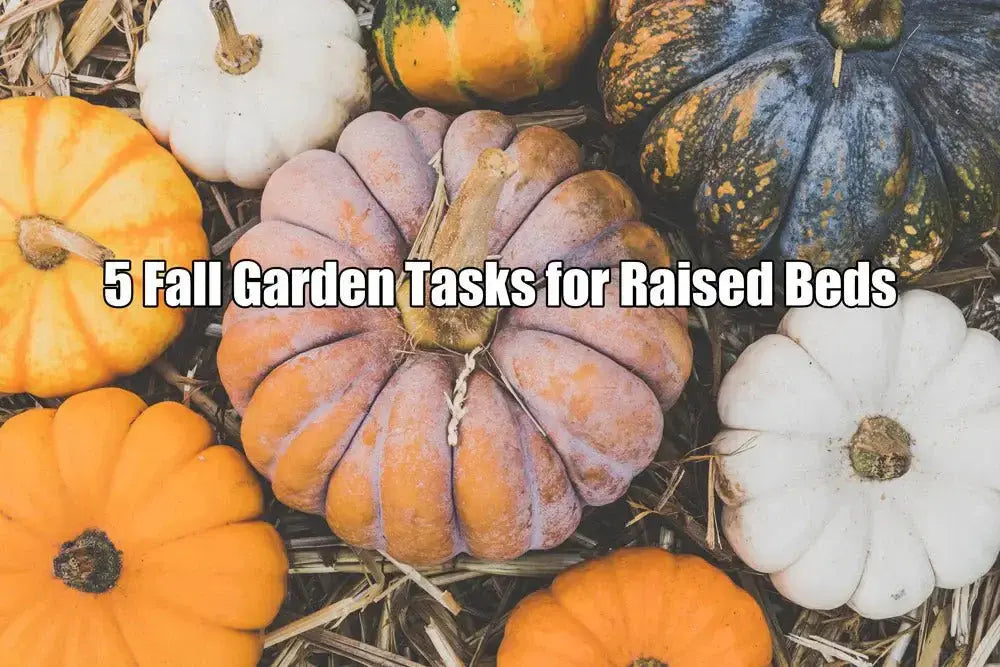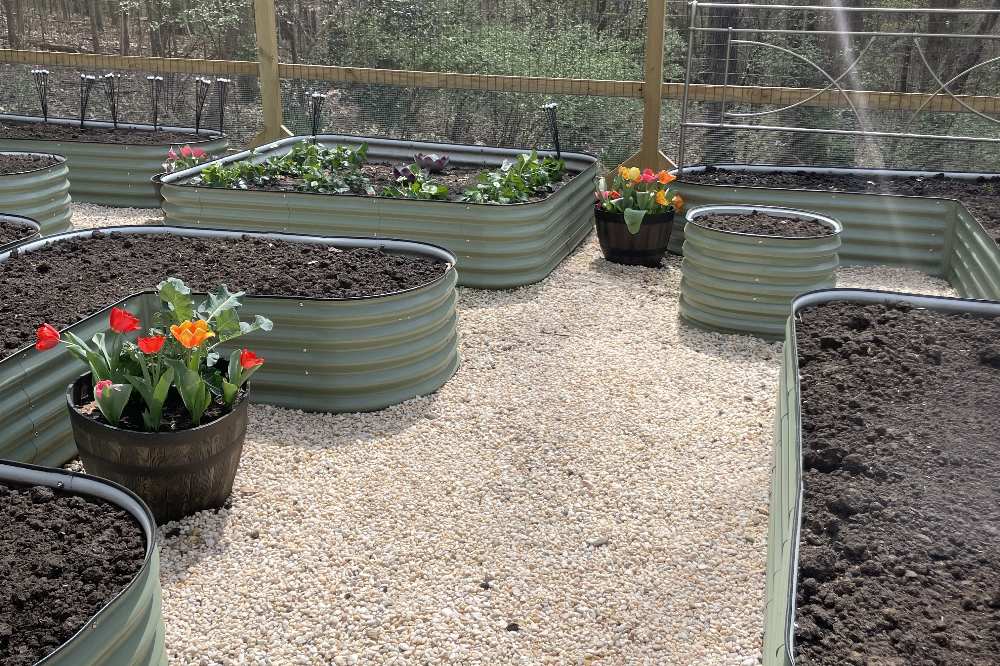Vegega Garden
Sep 15th, 2025
Raised Bed Harvest Ideas in September
September Harvest Ideas for Metal Raised Garden Beds
September marks a transitional month in the garden: summer’s bounty persists while cool-season crops begin to take center stage. For gardeners who rely on raised systems, this period presents unique opportunities to maximize yield, preserve produce, and prepare beds for the autumn and winter months.
Whether you grow in metal raised garden beds, conventional raised garden beds, or metal planter boxes, deliberate harvesting strategies and creative uses for your produce can extend both flavor and satisfaction well into the colder season.
Click and Jump to section⬇️
- What to Expect from Your Beds in September
- Creative Ways to Enjoy September Harvests
- Garden-to-Table Ideas for Entertaining
- Harvesting Best Practices for Raised Beds
- Soil Maintenance After Harvest
- Transitioning Beds to Fall Plantings
What to Expect from Your Beds in September

In many climates, September is a peak harvesting month. Warm-season crops—tomatoes, peppers, cucumbers, and summer squash—often produce a final flush, while cool-hardy crops started earlier in the season begin to mature. Metal raised beds and metal planter boxes warm earlier in spring and drain more efficiently than in-ground plots, which often results in a prolonged productive period. As such, gardeners can frequently realize a dual harvest: the last of summer’s fruiting vegetables and the first of autumn’s leafy and root crops.
Warm-season crops that commonly yield in September include:
- Tomatoes and cherry tomatoes nearing full ripeness
- Bell and hot peppers reaching mature size and flavor
- Eggplants and late zucchinis producing final fruit
Cool-season and root crops to watch for:
- Leafy greens such as kale, spinach, and late lettuce
- Root vegetables including beets, carrots, and radishes
- Herbs such as parsley and cilantro
Creative Ways to Enjoy September Harvests

Transforming your harvest into memorable meals and preserved staples is both practical and gratifying. Consider the following approaches to make the most of what your raised beds provide.
First, emphasize simple, produce-forward preparations that showcase freshness:
- Salads and bowls. Mix roasted beets with fresh arugula and goat cheese, or combine sliced heirloom tomatoes with basil and a high-quality olive oil for a classic salad.
- One-pot meals and soups. A hearty kale and white bean soup or a pepper-and-tomato ragù offers warming comfort and uses abundant garden produce.
- Quick pickles. Cucumbers and small radishes can be brined and refrigerated for immediate enjoyment.
Second, apply preservation techniques to maintain supply throughout fall and winter:
- Freezing: Blanch green beans, peas, and some leafy greens for frozen storage.
- Canning and pickling: Tomatoes, relishes, and fermented vegetables expand your pantry and capture seasonal flavors.
- Drying: Herbs and certain leafy greens retain flavor when dried or dehydrated for later use.
Garden-to-Table Ideas for Entertaining

September often brings social occasions—late-summer barbecues, harvest gatherings, and community events. Use produce from your metal planter boxes to create striking seasonal displays:
- Assemble a “harvest board” with roasted root vegetables, fresh herbs, and preserved condiments.
- Prepare small-batch preserves as gifts for neighbors and club members; jars labeled with your garden’s name enhance the personal touch.
- Design simple centerpieces from edible flowers and colorful chard or beet greens—functional décor that guests can sample.
Harvesting Best Practices for Raised Beds

Efficient harvesting begins with correct timing and technique. Raised garden beds allow easier access and cleaner produce, but attention to detail preserves plant health and encourages continued growth.
- Harvest at peak maturity. Pick tomatoes when they reach full color and yield slightly to pressure; harvest beets when roots are firm and appropriately sized. Overripe fruit can divert energy away from plants that could still produce.
- Use clean, sharp tools. A sterilized knife or pruners reduces disease transmission when cutting fruit or harvesting stems.
- Harvest gently to avoid soil compaction. Metal raised garden beds and raised garden beds provide defined edges; step around but not directly into planted zones to preserve soil structure.
Soil Maintenance After Harvest
After committing your produce to the pantry, attention must turn to soil health. Metal planter boxes permit straightforward remediation and amendment due to their contained nature.
- Remove spent plants. Clear foliage and roots that show disease; compost healthy plant material to recycle nutrients.
- Add organic matter. Layer compost or well-rotted manure to replace nutrients taken up by the previous crop. A 1–2 inch top dressing mixed lightly into the soil is often sufficient.
- Mulch to conserve moisture and slow weed growth. Organic mulches also moderate soil temperature, a benefit as daytime temperatures cool.
Transitioning Beds to Fall Plantings
One of the advantages of raised systems—particularly metal raised garden beds—is the ability to rapidly transition between crops. After clearing and amending, consider immediate succession plantings to maintain productivity:
- Fall leafy crops: Sow spinach, mustard greens, and Asian greens for a late-season harvest.
- Root crops: Plant a succession of carrots and beets in sections of the bed left free.
- Alliums and perennials: In some climates, early autumn is ideal for planting garlic or overwintering onion sets.
Recommended Raised Beds
Conclusion
September harvesting is as much about what you choose to gather as it is about preparation for the season ahead. Metal planter boxes and raised garden beds afford advantages in drainage, temperature control, and ease of access that make both harvesting and subsequ0ent soil work less burdensome. By combining thoughtful harvesting techniques, creative culinary applications, and prudent bed maintenance, gardeners can extend harvests, reduce waste, and enjoy a continuous farm-to-table experience.
If you use raised garden beds, take time this September to plan both immediate meals and preservation projects. Your efforts will reward you with a pantry bursting with seasonal flavors and a garden ready for a strong autumn cycle.



